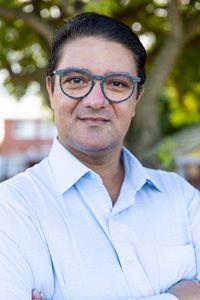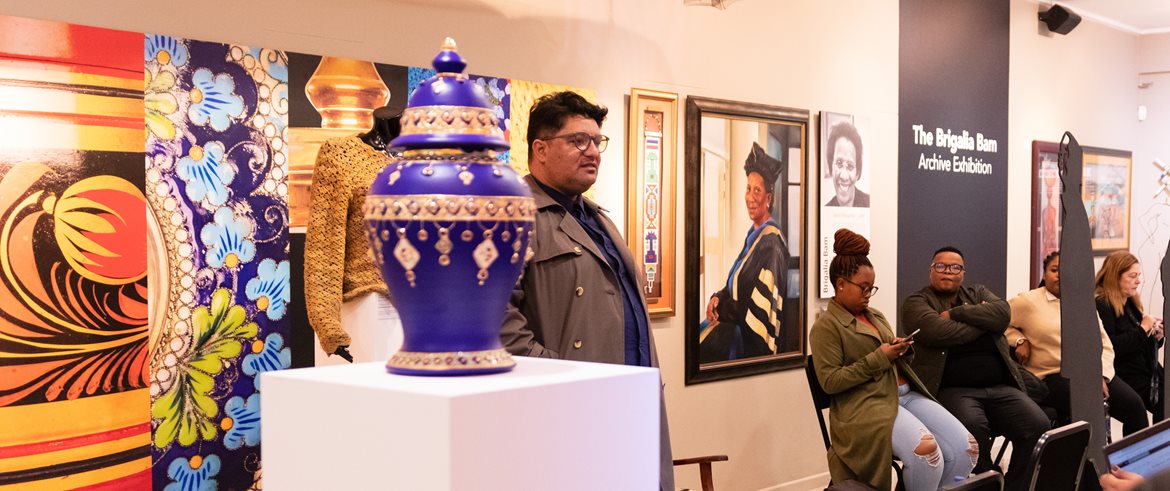
Post-pandemic
The world has just come out of a global pandemic that has seen more awareness of mental health and people tapping into different modalities to learn new ways of coping. With COVID protocols removed, cultural institutions have opened their doors, showing permanent collections and new offerings through renewed lenses.
Much of the content and artefacts are from the lived experience over the pandemic years – showing emotion and responses to laws and medical protocols that were a part of the pandemic years.
Responsibility of museums
Museums, galleries, archives all hold collections to respond to the status quo, and hold a mirror to the past and light to the future. These sets of practices, held in methodological and applications across genres play out in the theatre of museums.
A collection showing people standing in long queues, through photographs, to get a vaccine; masks that have been made from materials and displayed into new art sculptures, paintings that were made during hard lock downs; videos that were recorded in kitchens and added to online platforms.
The theatre space for museums has increased through the changed world since the pandemic. More online platforms have been created, engaging greater audiences and in particular new audiences.
Public programming and stakeholder engagements through schools; friends of the museum; universities, special interest groups and government cultural programmes were established a while ago.
They are not new but needed to be relooked at how they fit the purposes of both wellbeing and sustainability. Both concepts have multiple dimensions – they allow museums the opportunity to consider this in the development of the design of the collection and the relevant interfaces. When a collection is acquired, the intentional design must be through lenses of both elements of sustainability and elements of well-being.

At Nelson Mandela University, the Dr Brigalia Bam Archive Collection used some of the above considerations and informed how we made it accessible online and also how do we integrate it into primary schools, high school and universities, into current curricula across grades.
Museums, today, are charged with making collections available outside of the white box, to generate stimulation and question, critique and deeper interrogation towards meaning making through the questions that the collection asks.
Museums must delight
Museums, further contribute to delight – of the mind, the senses, the imagination, the methods of the genre, the subject matters, the overall creative process and creativity. All of this tickle the senses in many ways, evoking emotion; a call to action and deeper thought. The theatre of the museum allows people to get out of their heads and engage with content on display physically and digitally. A multi-modal display allows more of the senses to be in delight in the space.
Museums practice is a part of wellness
Wellness offers many elements, some of which encompasses mutually interdependent dimensions: the physical, which is designed and makes use of creative devices and forms with wall colours; specific lighting; design and layout; flow of the exhibition; the size of the room; how is it displayed online; what landing page images is designed to attract.
The intellectual dimension allows for question and feedback on multiple levels for the individual and groups who visit or view the exhibition. The thought processes are engaged in the display and leaves the visitor thinking in the moment and long after.
The emotional dimension where questions are asked- images provoke; genres excite; the content evokes emotions and this forms part of the wellbeing towards holistic joy. Collections hold information and each reader of the collection reads this from their lens.
The social dimension is piqued through the space where people are able to go to physical museums and spaces where they are able to enjoy the exhibition and different collections. Schools, groups, individuals are able to enjoy the time together through the interface of the collections.
The spiritual dimension forms parts of well ness and the content of an exhibition allows for the viewer to be engaged on different levels. This has always been part of any exhibition as it is interpreted by the viewer.
Sustainability
Elements of sustainability are broad and aimed at the preservation of a particular resource across different areas. Museums have as part of its DNA, the praxis to preserve artefacts, even restore and conserve many items. Archives do this at its core and then provide museums the artefacts to place on display etc.
In thinking through sustainability, the human at its core is the visitor, and audiences that form an important part of a collection. Cost to enter, access to collections online, if the collection materials are developed in multiple languages, including of otherly abled individuals. Additionally, the social component is also a part of the sustainability journey. How do we plan in museums that aims to include more and have a greater cohort of new people visiting museums and keeping the current patrons also engaging with collections.
Money keeps the lights on- and this is also an important part of sustainability. With lessening budgets for cultural programmes, business models need to be incorporated more fully to ensure that new money is being created for programmes.
As custodians of heritage, museums need to find a fine balance between access and charging for financial sustainability- does one charge a fee for people to enter. How do museums break ground in alternate finding models towards sustainability.
How environmental friendly are the decisions museums make for the planet, doe sit consider its carbon footprint, does it consider the materials its uses in the production of the theatre space.
The internationally celebrated days of significance, allow us to press pause and consider these areas for planning with purpose, to foster positive change for our shared social fabric. Museums therefore serve as a two way mirror, looking back and looking forward providing hope for the future through what has been shown of the past and now highlighted in new contexts.
At a time where the world is filled with less hope, may museums become areas of both nostalgia that begs to instil positive change.
Ryan Pillay is Deputy Director Arts, Culture and Heritage at Nelson Mandela University